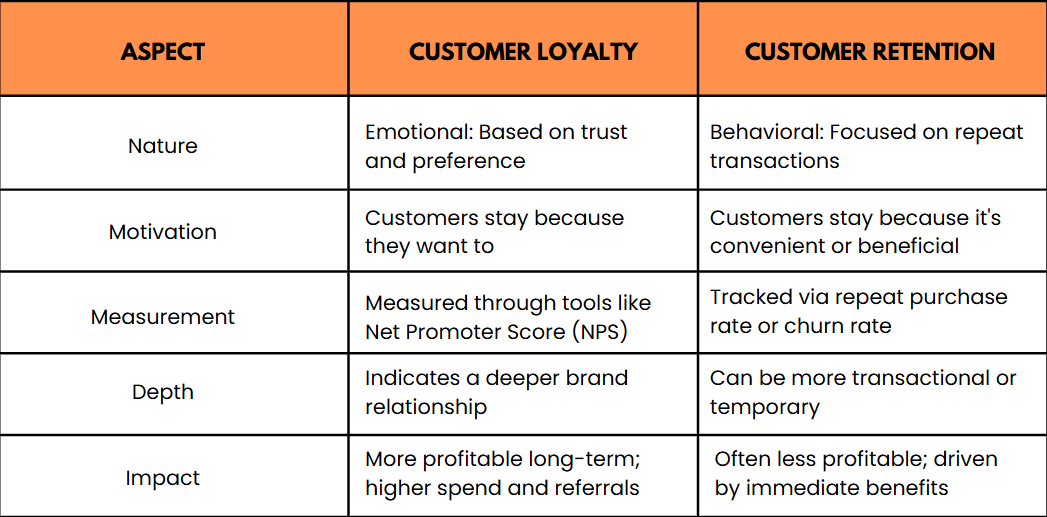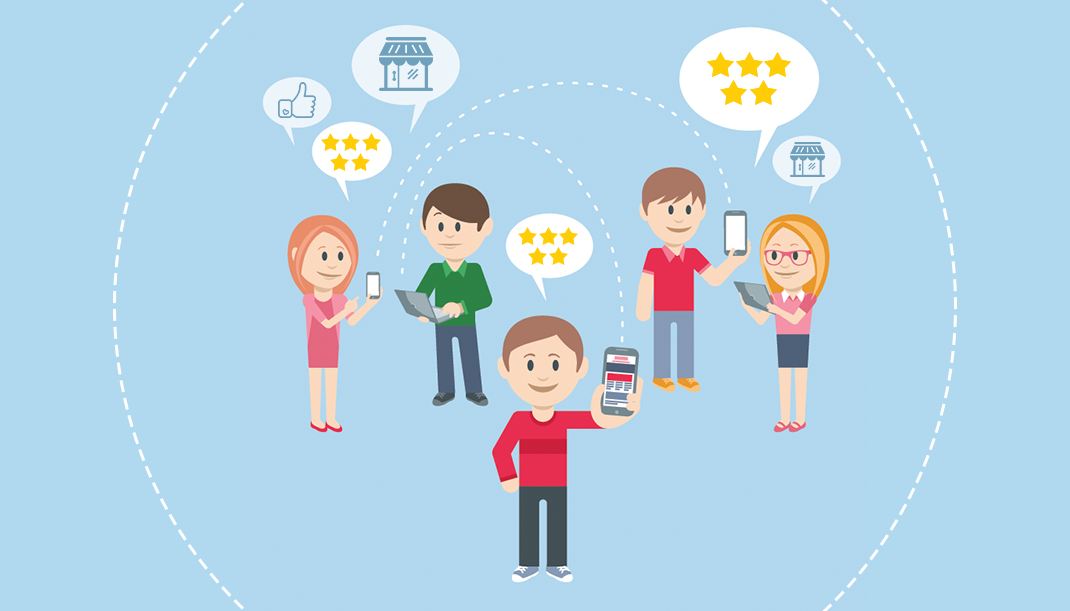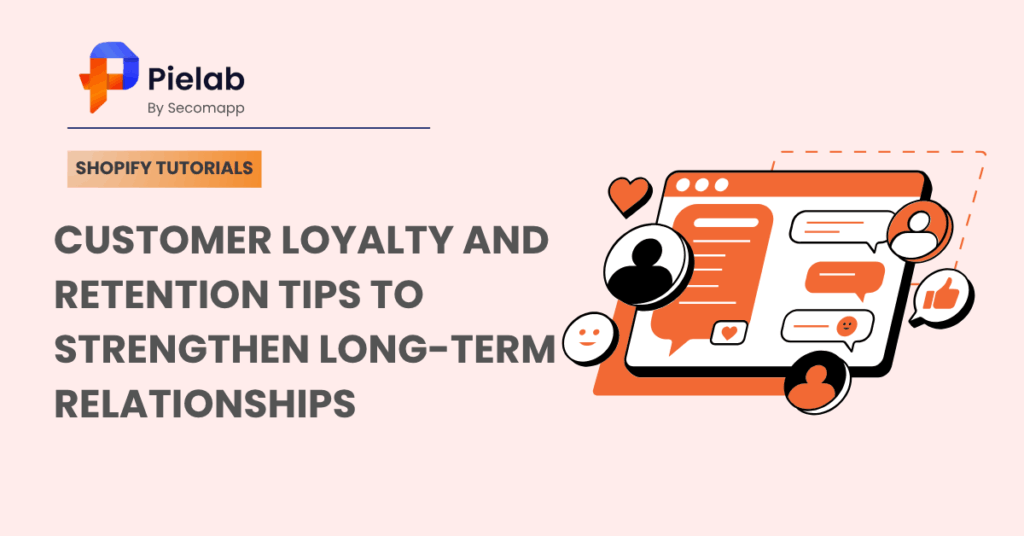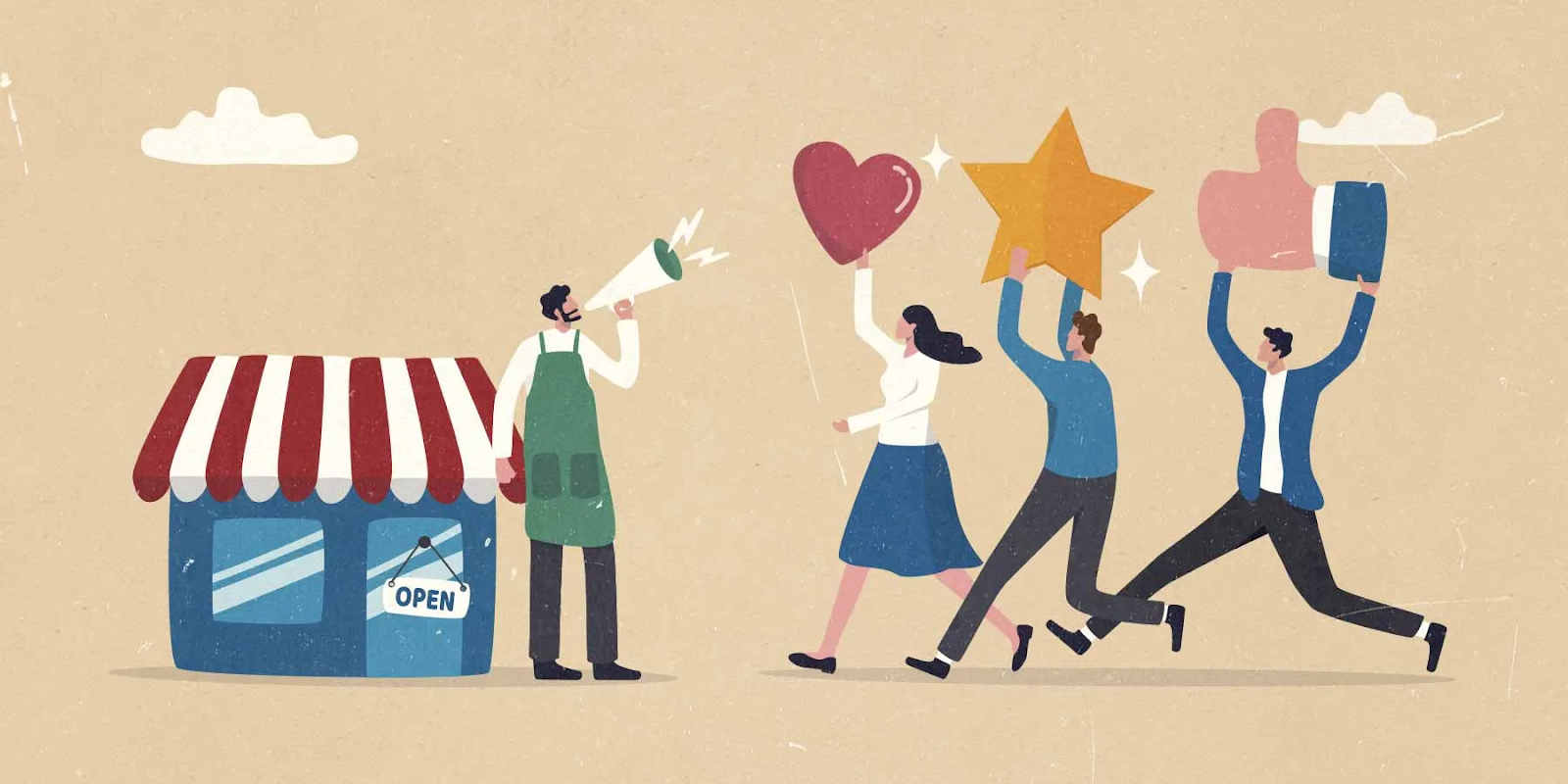Customer loyalty and retention are critical for long-term success in the eCommerce business. Customers will switch if they don’t feel valued or satisfied. Many merchants focus on gaining new customers but overlook retaining existing ones. This can mean missing out on the benefits that loyal customers bring as they will spend more, recommend the brand, and stay supportive.
To maximize the benefits of returning customers and reduce customers leaving, let’s explore efficient customer loyalty and retention strategies for your business.
What Is The Difference Between Customer Loyalty and Retention?
Customer loyalty is the emotional connection and trust a customer has with a brand, influencing their decision to purchase from the brand repeatedly over competitors.
Customer retention is the ability of a business to keep its existing customers over time by encouraging repeat purchases and continuous engagement.

One of the key differences between customer loyalty and retention is emotion versus behavior. While loyalty is emotional, built on trust and preference, retention is behavioral, focused on repeat transactions. Loyalty comes from the heart, a reflection of how customers feel about your brand. Retention, however, is rooted in what they do, often driven by incentives, convenience, or habit. For example, a customer might continue buying from a brand simply because it’s the fastest to ship, not necessarily because they love it.
The motivation between the loyal and retained customers is also different. Loyal customers stay because they genuinely want to, whereas retained customers may stick around out of convenience or temporary benefits. A loyal customer might go out of their way to buy from a specific store even if it’s not the cheapest, while a retained customer might make purchases only during sales or promotions. This distinction is important for businesses because the strategies for nurturing loyalty are often deeper and more relationship-focused, while retention tactics may rely more on functionality and timing.
Customer loyalty typically measured through dispositional tools like Net Promoter Score (NPS), which indicates how likely a customer is to recommend a brand to others, reflecting emotional attachment and brand satisfaction. Meanwhile, retention is tracked using behavioral metrics such as repeat purchase rates or churn. These metrics show whether customers are coming back, how often they return, and when they stop engaging. With this measurement method, loyalty is perceived as a deeper, more committed relationship, while retention can often be short-term and transactional. In other words, retention answers the question, “Are they still buying from us?” whereas loyalty answers, “Do they love us enough to choose us even when they don’t have to?”
As a result, loyal customers tend to be more valuable in the long run because they spend more, refer others, and are less likely to switch to competitors. Their higher lifetime value, willingness to promote your brand, and resistance to competitive offers make them a powerful asset for sustainable growth. Businesses that prioritize cultivating loyalty often benefit from stronger word-of-mouth marketing, improved customer satisfaction, and a more resilient customer base. Tools like Nector.io enable brands to create personalized experiences and strategic reward programs that foster both immediate retention and long-term emotional loyalty, helping businesses maximize the value of their customer relationships.
We will summarize these differences between customer loyalty and retention into a table:

How Customer Loyalty And Retention Help With Business Success
1. Boost Revenue With Returning Customers
Acquiring new customers can be expensive as it involves heavy marketing and promotions. However, loyal customers who are already familiar with your brand will require less effort and fewer resources to persuade them to make a purchase, making your marketing budget more efficient. Instead of spending large amounts on advertisements to attract new audiences, you can allocate resources toward loyalty campaigns, referral programs, or customer appreciation events. For example, a fashion brand could send exclusive preview sales to returning customers, creating a sense of privilege and encouraging them to buy again without the need for costly ads to close the deal.

2. Save Your Marketing Budget
Acquiring new customers can be expensive as it involves heavy marketing and promotions. This includes costs for paid ads, influencer partnerships, search engine marketing, social media campaigns, and time-intensive lead nurturing.. Brands often need to make multiple impressions just to earn a single click or conversion, and even then, there’s no guarantee that the customer will return.
However, loyal customers who are already familiar with your brand will require less effort and fewer resources to persuade them to make a purchase, making your marketing budget more efficient. These customers already know your products, trust your service, and may only need a gentle reminder, such as a personalized email, exclusive offer, or early access, to come back and shop again. Therefore, retaining existing customers often yields a higher return on investment.
3. Take Advantage Of Word-of-Mouth Referral
When customers are satisfied, they become brand advocates who share positive experiences with friends, family, and their social networks. As people tend to trust recommendations from people they know, they can easily become your new customers without having to spend too much on promoting. This form of word-of-mouth marketing is not only powerful but also cost-effective, as it leverages genuine customer enthusiasm rather than just paid messaging. In fact, studies show that consumers are more likely to make a purchase based on a peer recommendation than from any other form of advertising.
Satisfied customers who have built trust in your brand may leave glowing reviews, tag your business on social media, or refer others through casual conversation, all of which will contribute to greater exposure and credibility. For example, a customer who had a great unboxing experience with a product may post about it on Instagram, influencing dozens or even hundreds of their followers. By encouraging referrals through loyalty rewards or referral programs, businesses can amplify this effect, turning every happy customer into a potential marketing channel.

4. Strong Stand Against Your Competitors
Loyalty can be your strongest defense in the competitive eCommerce business landscape. Loyal buyers are more likely to stick with you, even if competitors offer tempting deals, making loyalty a shield that protects your market share. This brand allegiance creates a buffer against aggressive discounting, product launches, or ad campaigns from rival businesses. When customers trust your brand, feel connected to your values, and consistently have positive experiences, they’re less likely to be swayed by lower prices or flashy offers elsewhere.
For example, a loyal customer might receive a competitor’s 20% discount offer and still choose to purchase from your store because they know your customer service is reliable, your products meet their expectations, and they feel recognized and appreciated. This sense of trust and emotional attachment is something that competitors can’t replicate overnight. Businesses that invest in nurturing loyalty through rewards programs, personalized communication, and exceptional customer experiences builds long-term resilience in the competitive marketplace.
Ways To Improve Customer Loyalty and Retention
1. Reward Loyalty Programs
Loyalty programs give customers a reason to stay connected with your brand and keep coming back. Offer points, discounts, or exclusive perks to repeat buyers, making sure the rewards feel both valuable and easy to earn. A well-designed loyalty program not only encourages repeat purchases but also creates a genuine sense of appreciation and recognition for your customers. To maximize effectiveness, personalize the rewards based on customer preferences and purchase history, make communication regularly through email, app notifications, or social media to keep customers engaged and informed about their benefits.

2. Great Customer Service Is a Must!
Exceptional service keeps customers coming back time and again. Provide helpful, responsive, and proactive support to ensure your customers feel truly valued. Listen carefully to their needs, address their concerns promptly, and resolve issues quickly and effectively. Going the extra mile to exceed expectations not only builds trust but also creates memorable experiences. A single positive interaction can transform a first-time buyer into a loyal fan who returns regularly and recommends your business to others, fueling long-term growth and stronger customer relationships.
3. Personalize Customer’s Experience
These days, people prefer personalized experiences because they allow them to express themselves and feel respected and heard. Use customer data to tailor emails, product recommendations, and special offers that match their preferences and behaviors. Personalization makes customers feel valued, increases engagement, and encourages loyalty, helping to build stronger connections and drive long-term business growth
4. Track Your Data And Improve
Track key retention metrics like churn rate, repeat purchase rate, and Net Promoter Score (NPS) to measure your success. Regularly conduct A/B tests on emails, messaging, and promotions to optimize performance and discover what resonates best with your audience. Actively address customers’ concerns and maintain open communication to gather valuable feedback for continuous improvements. This data-driven approach helps enhance customer satisfaction, boost loyalty, and drive long-term growth
5. Make Sure To Do Follow-Up And Re-engage
Customers may come and go, but you can always encourage them to return. Follow up after purchases with thank-you emails, feedback requests, or personalized product recommendations to keep them engaged. Reconnect with inactive customers through email campaigns featuring special offers, updates, or exclusive deals. Celebrate customer milestones like anniversaries, achievements, or significant purchases with personalized messages or rewards to build loyalty and deepen relationships. These thoughtful touches help turn occasional buyers into lifelong supporters and drive sustained business growth.
Conclusion
These are the essential customer loyalty and retention strategies every business should know, from tracking key metrics for optimizing touchpoints to re-engaging customers and celebrating their milestones. While not every tactic will suit every store, each should be thoughtfully applied based on your unique resources and customer base. Most importantly, always keep in mind that the customers are at the heart of your business and they are the ultimate source of long-term value as well as benefits. By prioritizing their experience and satisfaction, you’ll not only foster loyalty but also drive sustained growth and success.


